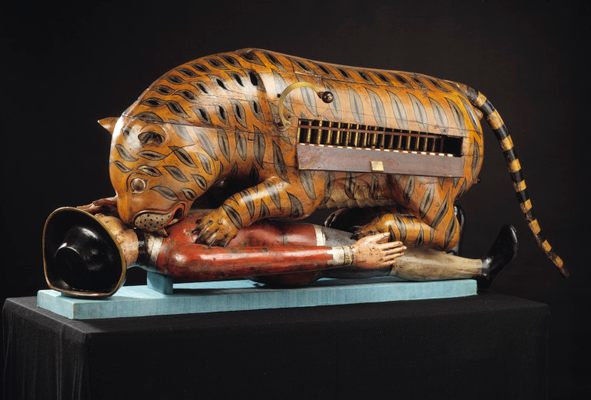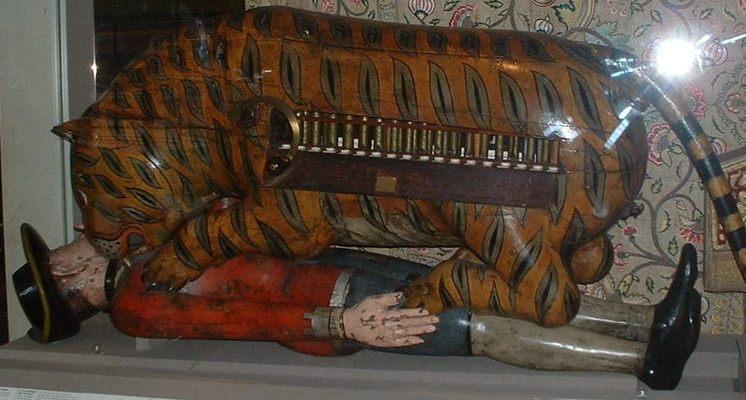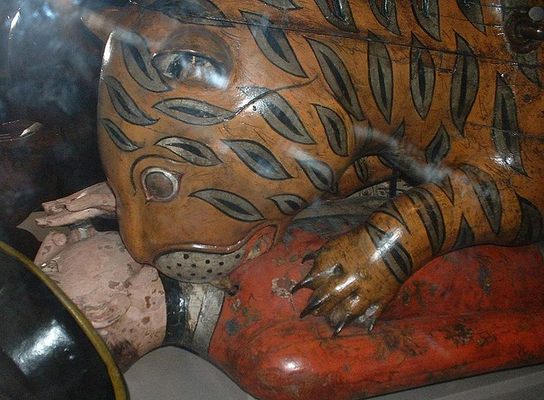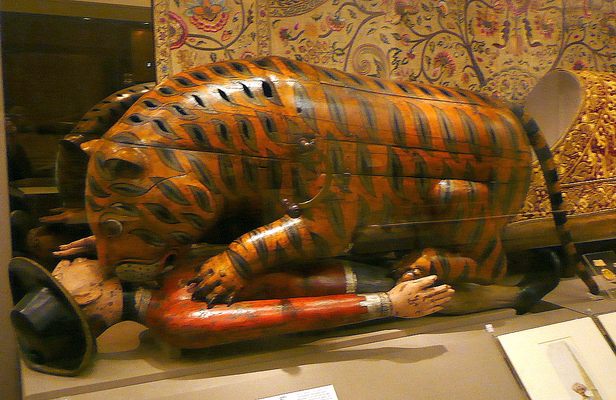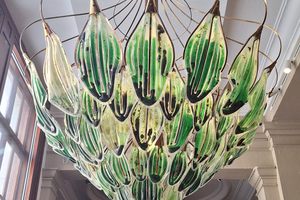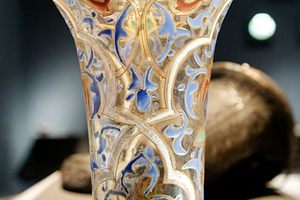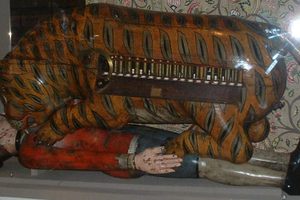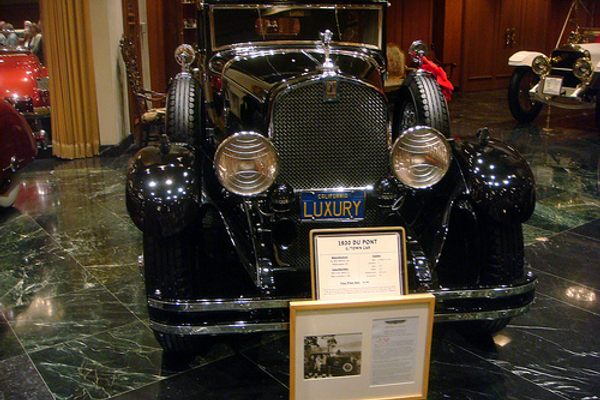About
First discovered by the British East India Company amongst the belongings of a tiger-obsessed sultan, Tipoo's Tiger is a physical reminder of the enmity felt between the residents of India and the British colonials. Sultan Tipu was known as "The Tiger of Mysore", and was the legendary enemy of the East India Company in the late 1700s, waging years of battles that became known as the Mysore Wars.
Tipu famously despised the English, and also had quite a thing for tigers. According to the V&A: "Tigers and tiger symbols adorned most of his possessions, from his magnificent throne to the uniforms of his guards. His armory included mortars shaped like sitting tigers, cannon with tiger muzzles, and hand weapons decorated with gold tiger heads, or inlaid in gold with tiger masks. . . He ordered the walls of houses in Seringapatam to be painted with scenes of tigers mauling Europeans. Live tigers were kept in the city and there were stories of prisoners thrown into the tiger-pits."
Most likely made in India, but possibly with French mechanisms, the design may have been influenced by the much-publicized story of the tiger-mauling death of the son of a prominent general engaged in the battles against Tipu in 1792. Later, similarly macabre pottery figurines, known as "The Death of Monrow", depicting the mauling in progress were popular mantle-toppers in England.
The tiger was brought back to England after Tipu's death, displayed at the Company's museum starting in 1808. It was an immediate hit with the British public. Tipu and the Tiger became part of the popular culture, referenced in art and literature for years to come.
Now on display at the Victoria & Albert Museum, the mechanical tiger is too fragile to be played regularly, but when it is brought out for special occasions at the V&A, the organ emits the sounds of a man in his death throes when the bellows are activated, the doomed figure repeatedly raising his arm in useless self-defense.
